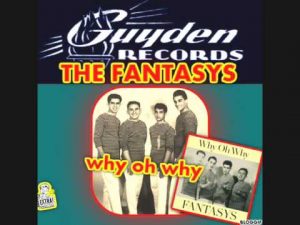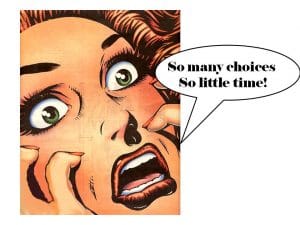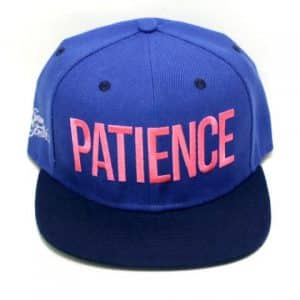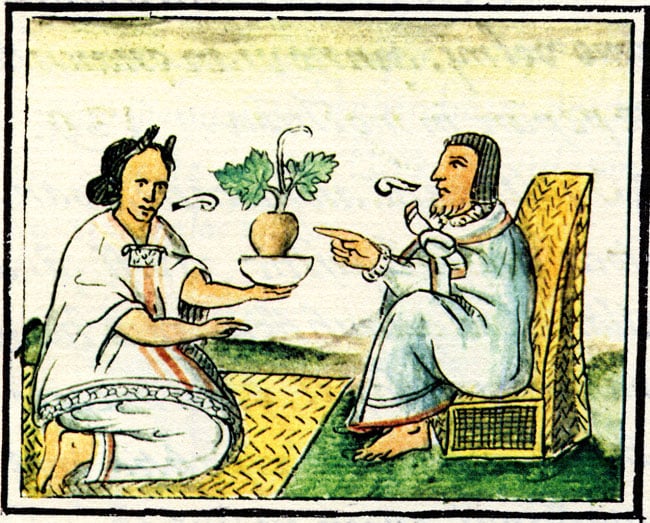 My article on Equine Cushing’s certainly generated plenty of questions and comments (and praise and criticism, too). So, while the subject is fresh in everyone’s mind, I figured that I might address a few of the comments and questions. As if there’s not enough controversy.
My article on Equine Cushing’s certainly generated plenty of questions and comments (and praise and criticism, too). So, while the subject is fresh in everyone’s mind, I figured that I might address a few of the comments and questions. As if there’s not enough controversy.
1, Is there any cure for Equine Cushing’s?
No (that was easy).
2. Why Do Horses Get Cushing’s?
We don’t know. Aging has something to do with it. Possibly stress. Plenty of theories, but no one knows for sure.
3. Is there a “best” test?
Want to get a bunch of veterinarians into a heated discussion? Ask this question. There are certainly a couple of tests that have been shown to be totally useless (serum cortisol, for example). But, so far, nothing has been shown to be a real “gold standard,” that is, no test has been shown to be 100% accurate. So, for example, while some folks will pan tests such as the dexamethasone suppression test, citing fears of laminitis, some experts feel that it’s the most accurate test, and that the risk of laminitis isn’t worth worrying about. The single ACTH test is certainly easier, but it’s not been shown to be better. The thyroid releasing hormone (TRH) stimulation test is gaining popularity. However, the final word on the “best” test is still out.
 4. What is the most important treatment?
4. What is the most important treatment?
Read this carefully, and don’t forget it. The most important treatment for a horse with Cushing’s is good husbandry. Old horses with Cushing’s need good feed and good care. As one reader noted, as told by her veterinarian, “Your horse is going to die with Cushing’s disease, but not from Cushing’s disease.” And that’s right. There are certainly complications associated with Cushing’s, but paying diligent attention to the overall health of a Cushing’s horse – looking after hooves and teeth, prompt attention to wounds – is much, much more important than regular testing, medication, herbs, etc.
5. Shouldn’t I be doing everything I can for my horse?
Sure. But there’s a difference between “doing everything” and doing what’s important. Treatment for Cushing’s horses can be very confusing, and there are lots of choices, especially if you get into trying each and every nostrum that’s out there. Not to mention the cost of “everything.”
 Sometimes, I think people get saddled with a certain amount of guilt when it comes to treatments. Feeling like they are obliged to “do everything” makes them a target of people who want take advantage of people’s caring and concern. But I think that it’s a lot better to supply a good hefty of good old horse care – without medication – than it is to empty your bank account on treatments that have not been shown to make a significant difference in the long run (and that can include pergolide). You owe your horse a good life – you can’t make everything perfect forever.
Sometimes, I think people get saddled with a certain amount of guilt when it comes to treatments. Feeling like they are obliged to “do everything” makes them a target of people who want take advantage of people’s caring and concern. But I think that it’s a lot better to supply a good hefty of good old horse care – without medication – than it is to empty your bank account on treatments that have not been shown to make a significant difference in the long run (and that can include pergolide). You owe your horse a good life – you can’t make everything perfect forever.
6. Wait, are you saying that it might be OK to not give my horse pergolide?
Yes. Especially if you think you have to choose between giving your horse pergolide and getting rid of him.
7. Why do they get so hairy? I mean, seriously hairy.
8. So what happens if I choose not to treat my Cushing’s horse?
You know, that’s a really good question. When I started practice, back in the 1980’s, there really weren’t any good treatment options. But I went back to book in my library, “Current Therapy in Equine Medicine 2,” published back in 1987, to see what it had to say (from pages 184 and 185).
“If the owner elects to maintain a horse with a pituitary tumor for period of time, a high plane of nutrition and attempts to minimize infections will be necessary. Any infections should be treated, but wounds will be slow to heal, and those animals are probably more susceptible to stress and disease than are normal animals.”
And I think that’s all true. In fact, I think it’s probably just as true now that there is a treatment (pergolide) that does help, at least with a few things. But is treatment going to mean that your horse with Cushing’s is going to suffer if you don’t treat him? That, I think, is harder to say.
 9. If I test him all the time, and I treat him, is he going to live longer?
9. If I test him all the time, and I treat him, is he going to live longer?
Surprisingly, there’s not a lot of information out there about how long horses live after they’ve been diagnosed with Cushing’s. There’s a study of 217 horses from 2012 that may help provide some insight. The most common signs of Cushing’s in the studies horses were hirsutism (as pretty much everyone knows, they can get really hairy) and laminitis. Interestingly, however, the clinical signs and lab data were not associated with survival, that is, you couldn’t tell how long the horses were going to live after diagnosis based on lab work. That said, 50% of the horses were alive 4.6 years after diagnosis (most that didn’t live got euthanized, and most of those got euthanzied because of problems related to Cushing’s). So, the bottom line is that you shouldn’t expect a treated horse to live longer with treatment, nor even to necessarily avoid problems.
10. OK, so what should I expect if I decide that I do want to treat my horse with pergolide?
Well, a lot of it depends on how long your horse has been affected with the disease. Early on, horses can show some obvious changes. Shedding improves. They can be more active, and have a better attitude. Body condition can improve sometimes. ACTH levels often go down. Good stuff. But if the Cushing’s is advanced, you may not see such good results.
 11. How long should I expect to have to wait before I see any results from treatment?
11. How long should I expect to have to wait before I see any results from treatment?
You may have to wait two or three months. Put your patience hat on.
12. Other than the expense, are there any downsides to pergolide therapy?
The most common side effect is a loss of appetite. If you start your horse on pergolide, and he stops eating, take him off the drug until he starts eating again. Then, start him back on a low dose, and increase it slowly. Or split the dose until he starts eating you out of house and home again.
13. What if my horse isn’t responding to pergolide?
It sort of depends on what you mean by “responding.” If you’re looking at your horse, and you don’t see any change within a few months after starting therapy, it means one of two things. First might be that the dose isn’t sufficient (we’re assuming he’s eating the medicine, of course). Second might be that he can’t respond. You see, there’s a group of horses that pergolide won’t seem to help, regardless of the dose. There’s also a group of horses that pergolide seems to help clinically (horses lose their hairy coats and such), but that don’t so changes in blood measurements after therapy. But for my money, if you’re not seeing any changes in your horse after the medicine, there’s no reason at all to just keep upping the dose (and the expense), especially after you try it a couple of times and there’s still no change.
 14. Should I vaccinate my horse if he has Cushing’s?
14. Should I vaccinate my horse if he has Cushing’s?
I think you probably should. It’s true that the immune system of horses with Cushing’s disease is suppressed, compared to normal horses, but no one has actually looked at the responses to vaccination in Cushing’s horses. I don’t really see any reason in just throwing up your hands when it comes to trying to keep your horse from getting a vaccine-preventable disease, even if he does have Cushing;s. It’s back to the good husbandry thing.
15. Will pergolide prevent laminitis?
Nope. I mean, I guess you could hope that if you can help normalize your horse’s metabolic state with pergolide, it might help keep him from getting laminitis, but it’s certainly not directly preventative. It certainly has not been shown to decrease either the frequency or severity of laminitis in Cushing’s horses. Horses with severe laminitis will still have severe problems, even if you give them pergolide.
16. What about chaste berry?
Well, research certainly isn’t supportive. But some people have commented on positive results. It could be the chaste berry – it could also be that some people really started paying attention to their horses once they got a diagnosis of Cushing’s disease. Personally, if I were going to medicate my Cushing’s horse, I’d stick with a product in which the content is known, and to which positive responses have been measured.
 17. What about compounded pergolide products? They’re usually cheaper.
17. What about compounded pergolide products? They’re usually cheaper.
Yes, they certainly are. There’s a certain, “You get what you pay for,” aspect to this, however. Turns out that, when studied, many compounded products fell far below labeled potency upon delivery to the laboratory that tested them. The United States Food and Drug Association doesn’t support it either. Again, it’s just me, but if I’m going to pay for a product, I like to pay for a product in which the content, potency, etc., is regulated and controlled. I don’t like just popping anything into my own body, and I’m certainly not going to pop just anything into my horse’s body. I’m not a fan of Russian roulette when it comes to medications.
 So there you go. Like so many other things in horses, the number one thing about caring for your Cushing’s horse is good care. All of the medication, testing, herbs, etc., in the world isn’t going to get rid of the underlying problem. And if all you do is provide good care, and prevent your old friend from having to suffer, while at the same time resisting the urge to plunk down money on each and every product that offers to “support’ or “help,” then I say you’re an angel.
So there you go. Like so many other things in horses, the number one thing about caring for your Cushing’s horse is good care. All of the medication, testing, herbs, etc., in the world isn’t going to get rid of the underlying problem. And if all you do is provide good care, and prevent your old friend from having to suffer, while at the same time resisting the urge to plunk down money on each and every product that offers to “support’ or “help,” then I say you’re an angel.
Go pay attention to your Cushing’s horse, and make sure that he’s getting proper attention to the things that really matter. That’s what he needs the most.








